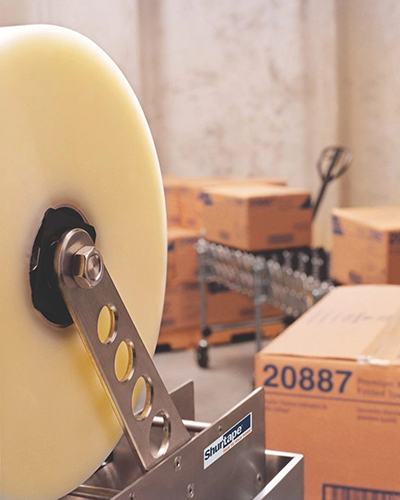Choosing packaging tape may seem like an insignificant decision to your overall packaging operation; but in reality, it’s as critical of an element to your secondary packaging strategy as the box and filler you have selected to keep your contents secure. Together, secondary packaging ensures your goods arrive at their final destination safely and intact.
Incorrect packaging tape selection – or application – could result in product damage or theft, as well as damage to your reputation and relationship with your customer.
From hot melt to acrylic adhesives, cold to warm temperature, and everything in-between, there are many factors to consider when choosing the right packaging tape:
1. Grade: Packaging tapes are available in a range of grades, meaning varying levels of film and adhesive thickness. These grades deliver a range of different holding power and tensile strength. When considering what grade of tape to purchase, be sure to factor in carton size, content weight, and the production and shipping environment in which the tape is being used. As any of these variables increases, so too should the grade of tape you choose.
2. Environment: When you are purchasing packaging tape, don’t forget to consider the production and shipping/storage environments. Things like temperature and environmental conditions such as humidity and dust can impact the quality of the seal.
3. Substrate: Consider what you are sealing. There are many carton types available, from corrugated to options like recycled, thick, or double wall, printed or waxed. Each one brings its own set of advantages to the distribution network, but also its faults when it comes to tape performance.
4. Application Method: There are two ways to apply packaging tape: in a manual process using a hand-held tape dispenser or in an automated process using an automatic case sealer. In a manual process, features such as easy unwind, good tack for initial grab to the corrugated surface and strong film backing to prevent stretching and breaking are all critical. Quiet tapes are also a plus for those working in close proximity to others. For automated operations, focus on easy unwind to reduce tape breakage due to stretching and tearing during application. Tapes offering instant adhesion are also beneficial in environments that require immediate palletization of cartons.
5. Tape Quality: Finally, there is one last thing to pay attention to when choosing a tape: tape quality. Good quality packaging tapes are easy to unwind, have good adhesion to the corrugated surface, and deliver the strength and durability needed to withstand the distribution network.
Oftentimes, the tape alone is blamed when case seals fail. But it’s the combination of the tape, the carton and the application method, as well as the environment that leads to secure – or unsecure – seals. You may not be able to replace some of these factors, but considering them next time you choose packaging tape may help deliver a better, more secure case seal.
Post time: Jun-13-2023






